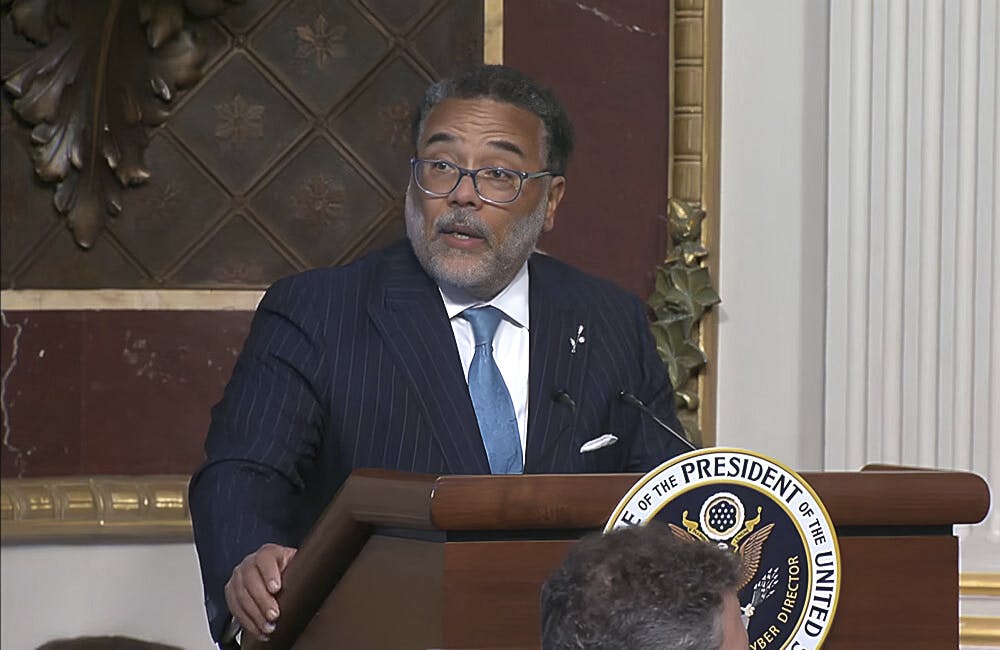DevOps Helped These Agencies Pivot to Remote Work Since the Pandemic
Described as a forward-leaning agency, digital transformation at the agencies ultimately came down to culture.

DevOps and Agile processes helped U.S. Citizenship and Immigration Services (USCIS) transition smoothly to mass telework at the beginning of the COVID-19 pandemic in March, but Deputy CIO Yemi Oshinnaiye said its success came down to culture.
By fully digitizing the citizenship application process, the agency saw great results.
“Being able to communicate effective information is important to us,” Oshinnaiye said at an FCW IT Modernization event this week. “To get there, for us modern tools and technology transform the way we think. It’s really about culture. Modern technology allows you to get there faster with different methods.”
Once USCIS began to use Agile processes and DevOps, the agency digitized rapidly and then faced another challenge: a brand new attack surface. Paper is more secure, Oshinnaiye said, so when you digitize paper processes, you create more opportunities for criminals and nation-state actors to hack into your IT system.
“As you become more digital your threat vector changes,” Oshinnaiye said. “Security lives everywhere. How do I get my security professionals embedded in my software teams, testing teams, infrastructure teams?”
Edward Dowgiallo, chief enterprise architect for the Department of Transportation’s Federal Transit Administration, advised agencies to keep their missions front of mind when making decisions about technology acquisitions.
“What is the actual roadmap to get there? That’s what we do with all our technologies whenever we think about purchasing something — does it align with the needs of the business, and do we have a capability that’s overlapping?” Dowgiallo said at the FCW event. “We try to keep the amount of different technologies we have relatively small. It seems really good with those particular tools rather than try to spread ourselves thin and have too many things to be dealing with.”
Jose Padin, director of U.S. public sector sales at Zscaler, called USCIS a “very forward-leaning agency” when rolling out services to customers. Oshinnaiye said keeping the mission front of mind helped USCIS pick and choose what technologies to use when digitizing, which eased the telework transition.
“Because our thrust was digital and our vision was digital, we were preparing with networks, so they were robust and ready to go so when COVID hit, it motivated us to move our digital journey a little faster. It created a roadmap,” Oshinnaiye said.
USCIS was about three quarters of the way through a new platform deployment when the pandemic hit, so it decided to “turn it up” and finish deployment quickly so employees could have access while working remotely, Oshinnaiye said.
Dowgiallo said the FTA also transitioned seamlessly to telework due to ongoing, rapid digitization that started before the pandemic.
“Right before COVID hit, the entire staff was trained up on [tools like Microsoft Teams], so we took no hit basically when everybody went remote,” he said. “The other area is obviously there’s been a major disruption to transportation in the public sector. We’re trying to look at the data and see how that’s changed for potential future grant-making.”
The ability to tweak an IT strategy and then implement changes quickly ultimately comes down to agency culture and whether an organization fully embraces Agile and DevOps.
“Agile and DevOps means the ability to pivot,” Oshinnaiye said. “Understand your business and the experience. A lot of things we do have overtones in the applicant experience and the digital experience, and that experience is going to drive what we do. Sometimes the experience changes when you implement a platform, and there’s where the pivot needs to happen.”
Looking ahead, both USCIS and the FTA are looking for ways to implement artificial intelligence and machine learning into its DevOps processes.
“You definitely need to understand what your digital experience is going to be and how to make things more accessible to users,” Dowgiallo said. “How do you make the designs consistent across everything? Data is one of our biggest assets and we need to find better ways to leverage that data.”
This is a carousel with manually rotating slides. Use Next and Previous buttons to navigate or jump to a slide with the slide dots
-

VA Watchtower Monitors Critical Apps to Thwart Disruptions
The tool provides a real-time view on agency systems to address glitches and system issues before they affect services.
17m listen -

State Department Touts Digital Diplomacy in New Tech Strategy
The new plan outlines ‘digital solidarity’ to counter threats in cyberspace, including malicious artificial intelligence.
8m read -

DHS, DOD Officials: AI is a Teammate, Not a Tool
AI can work alongside government by providing better information to humans for them to make real-time decisions.
5m read -

White House Might Remove Degrees From Federal Cyber, IT Jobs
White House and federal leaders are moving toward skills-based hiring practices to fill critical roles in IT and cybersecurity.
5m read








